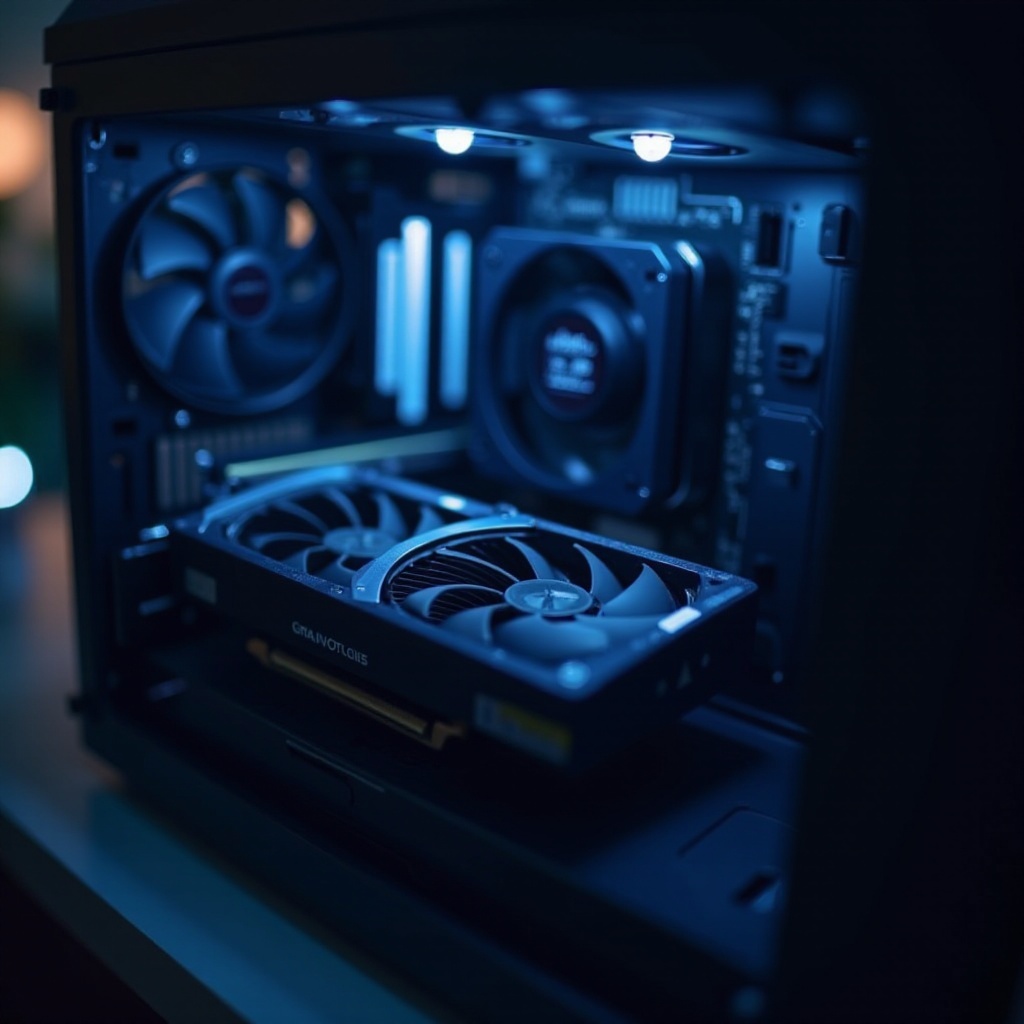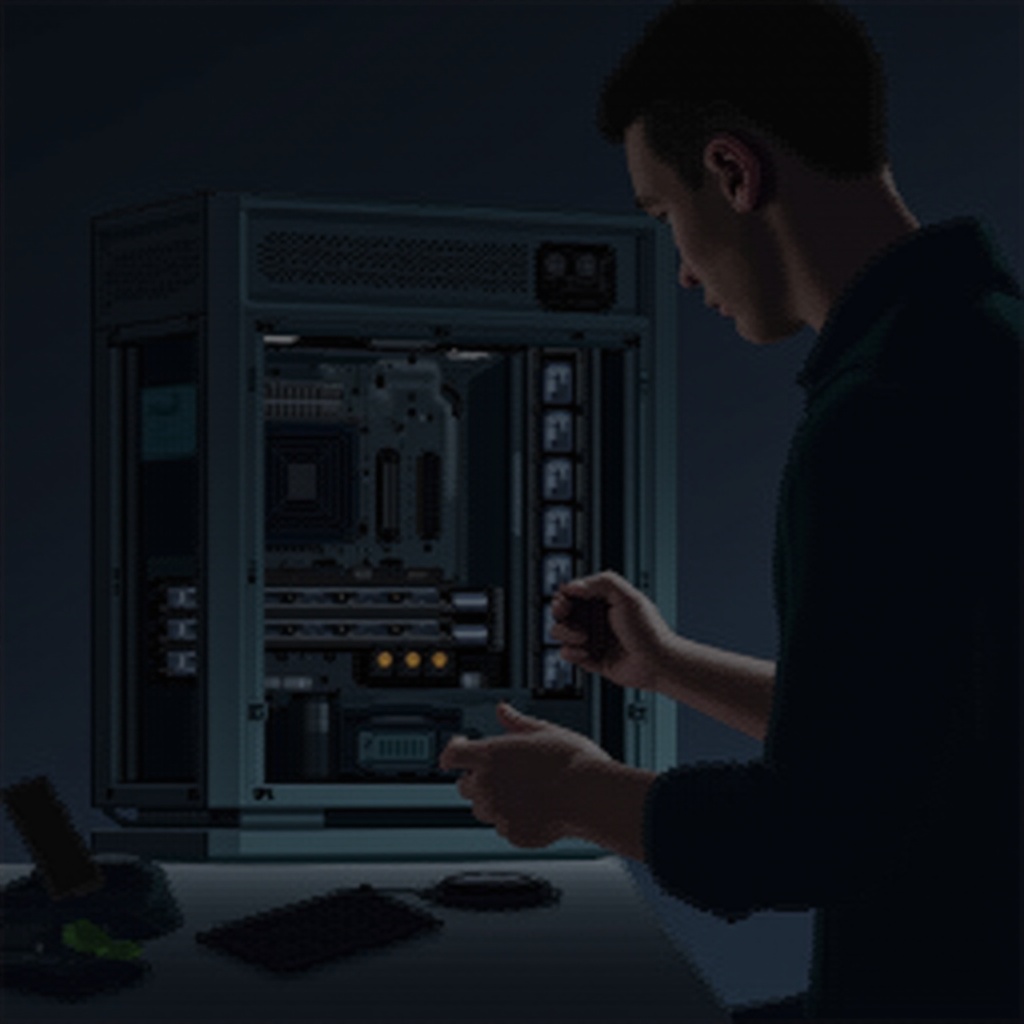Introduction
A graphics card plays a crucial role in how smoothly your computer handles tasks, from everyday activities to demanding gaming sessions. When a graphics card’s health deteriorates, it can lead to significant disruptions, including visual glitches and reduced performance. Recognizing the early signs of a dying graphics card can save you a lot of trouble, prevent further harm to your system, and ensure a seamless computing experience. In this article, we explore these warning signs, guide you on diagnosing potential issues, and discuss whether it’s wiser to repair or replace your graphics card.

Visual Indicators of Decline
Visual disturbances often serve as the initial warning signs of a graphics card nearing failure. These problems can start off as simple software hiccups but may evolve into critical hardware concerns if left unaddressed.
Distorted Graphics and Anomalies
As a graphics card starts to fail, visual errors such as distorted graphics frequently become apparent. Users might notice unexpected shapes, bizarre colors, or patterns—such as checkerboards or screen tears—interfering with normal screen operations. These abnormalities arise when the GPU struggles with rendering calculations, resulting in pixel discrepancies and graphic inconsistencies.
Screen Flickering and Line Issues
Another typical symptom includes screen flickering or lines disrupting the display. Initially minor, these flickerings can intensify, making screen visibility challenging. Emergent lines—horizontal, vertical, or jagged—further point to a graphics card’s declining performance, reflecting its inability to maintain display output.

Performance-Related Warning Signs
Apart from visual errors, a range of performance-related signs may signal impending graphics card issues.
Drops in Frame Rate
Sudden, unexplained drops in frame rate are often symptomatic of graphics card problems. When a card that once maintained stable frame rates begins to falter, this might indicate progressive degradation. Fluctuating frame rates impair video playback and gaming fluidity, diminishing the user experience.
System Freezes or Crashes During High-Intensity Tasks
Frequent system freezes or crashes during resource-heavy tasks, such as gaming or video rendering, are indicative of a failing graphics card. Excessive loads can overwhelm an impaired card, leading to total system failure. This instability stems from the GPU’s inadequacy in handling demanding calculations, occasionally shutting down to avert potential damage.
Audio and Physical Signs
In addition to visual and performance symptoms, audio and physical cues may hint at a failing graphics card.
Unusual Sounds from Your Graphics Card
Strange or excessive sounds, like grinding or screeching emanating from your graphics card, are often due to failing components. The fan may be operating inefficiently, struggling to cool the GPU, or other parts could be wearing out. Persistent noise suggests overexertion, which can lead to overheating and further complications.
Overheating and Burning Odors
A critical red flag is a burning smell from your graphics card, indicating potential overheating or component failure. Combined with noticeable heat from your PC, this is a clear sign of distress. Address these cues swiftly to prevent extensive damage to your system.
Diagnostic Approaches and Troubleshooting
Pinpointing the problem is crucial, and luckily, there are several methods to diagnose and verify if your graphics card is truly failing.
Implementing Software Diagnostics
Diagnostic tools such as GPU-Z, HWMonitor, and FurMark offer insights into your graphics card’s health. These programs provide real-time tracking of temperature, load, and fan speed, highlighting irregularities. Conducting stress tests with these applications can help evaluate performance under load, confirming if overheating or underperformance is occurring.
Conducting Hardware Inspections and Tests
Following software diagnostics, physically inspect your graphics card. Look for dust build-up, check connections, and assess any visible damage. Testing your card in another PC setup can reveal if issues persist. If problems dissipate, components like the motherboard or power supply may be at fault rather than the GPU.

Repair or Replace: What’s the Best Course of Action?
Deciding between repairing or replacing a malfunctioning graphics card involves weighing various factors. Consider the card’s age, warranty status, and whether its performance meets current needs. If under warranty, contact the manufacturer. For older models, compare the cost of repairs against upgrading to a new card, which could provide better long-term value and enhanced performance. Deliberate on both options to make a well-informed choice.
Conclusion
Identifying a failing graphics card is vital to maintaining a seamless computing experience. By recognizing the symptoms and using diagnostic methods outlined in this guide, you can act promptly. Whether opting for repairs or a replacement, make your decision based on a thorough evaluation and future requirements. This proactive approach minimizes unforeseen issues, keeping your system running efficiently.
Frequently Asked Questions
Can I continue using my computer if my graphics card is failing?
Continuing use is possible, but not advisable as issues may worsen and risk damage to the system.
How often should I check my graphics card for issues?
Perform routine checks every few months to catch problems early and maintain optimal performance.
Is it worth repairing a dying graphics card, or should I replace it?
Consider repair costs and card age. Replacement might offer better value if repairs are costly or the card is outdated.